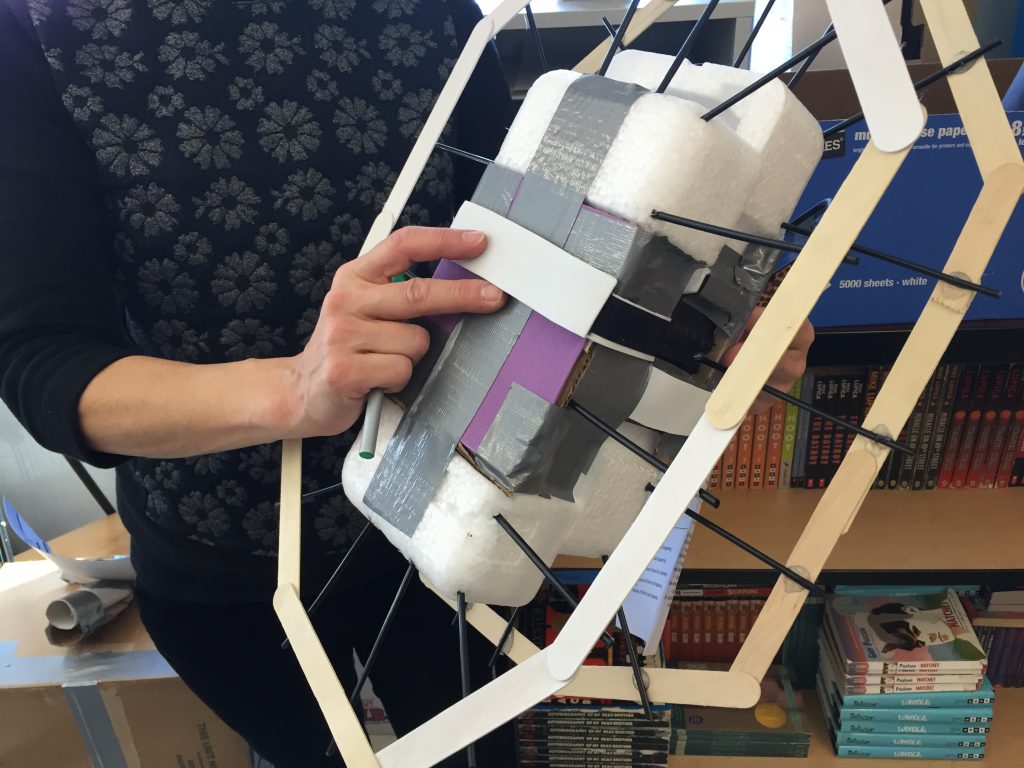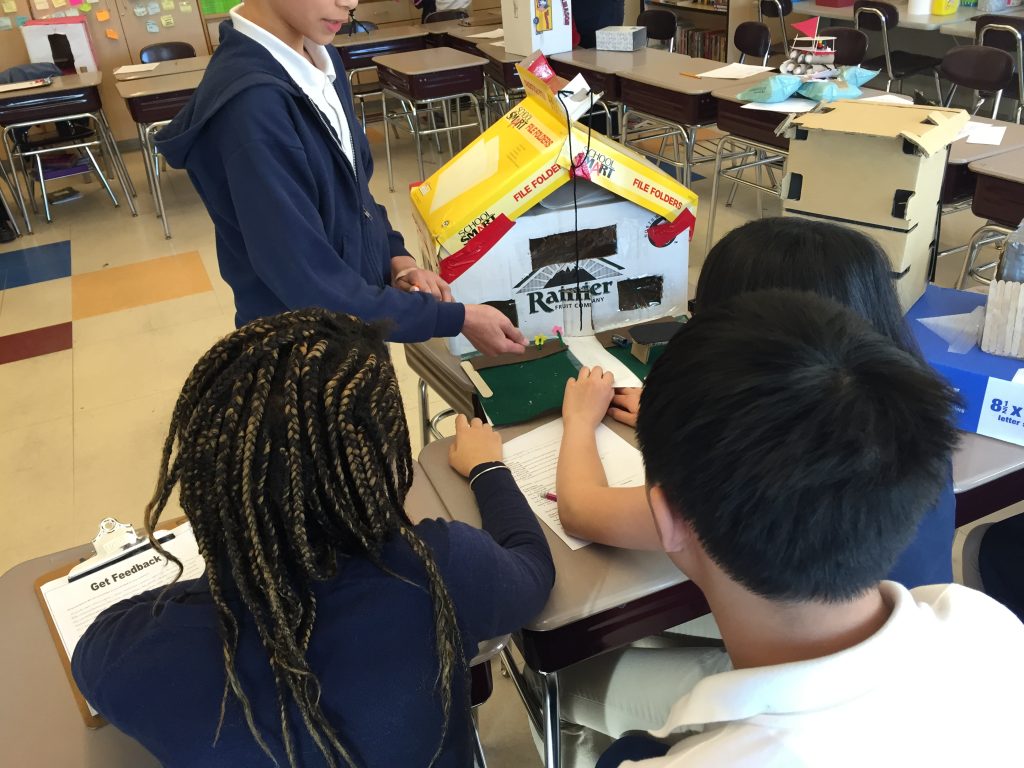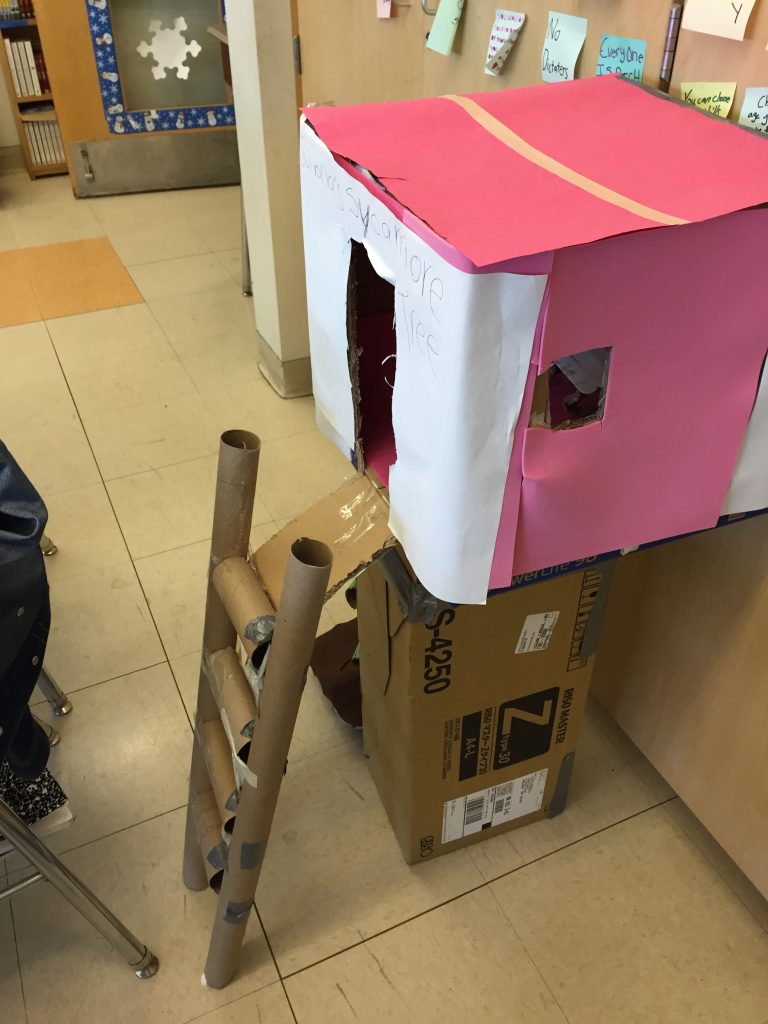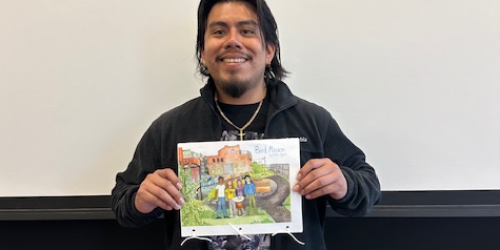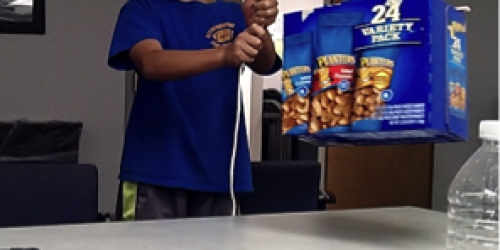April 21, 2015 by Elissa Milto
Beginning this January, the CEEO began a partnership with the Linden STEAM Academy in Malden. The Linden STEAM Academy is an innovation school for grades K-8. We wanted to work with Principal Richard Bransfield and the teachers at Linden because they have been working to incorporate STEAM (science, technology, engineering, arts and math) through project-based learning since they became an innovation school is 2012. We feel that the school’s mission is closely aligned with the CEEO’s own mission and its core principals.
The plan for January 2015-June 2015 is to support teachers as they implement Novel Engineering in their classrooms. We are doing this through monthly professional development workshops and by spending one full day each week at the school to visit classrooms and talk to teachers. The professional development workshops are designed to introduce the teachers to the Novel Engineering approach by showing videos of students engaged in Novel Engineering, sharing what other teachers have done in their classrooms and helping them plan for implementation in their own classrooms. Each teacher is approaching Novel Engineering and engineering in a way that works best for their classrooms and with comfort level. We are working closely with the teachers in hopes that they will be able to offer us insight into what we should include in a Novel Engineering package as the grant is ending and we are turning our attention from research to dissemination. Our hope is to continue the partnership during the 2015-2016 school year because we’ve been very excited by what we’ve seen so far.
The first professional development session was held at the end of January. This was a brief introduction to Novel Engineering. The teachers read Peter’s Chair by Ezra Jack Keats and then found and solved problems related to this text. We spent some time talking about the Novel Engineering approach and books that have been used at other schools. We assumed that the teachers would wait until the next workshop before trying Novel Engineering, but several of the teachers decided to try it in their classroom.
Teachers from several grades recreated their learning experience and did Peter’s Chair in their own classrooms. Lauren Walsh, a 7th grade English Language Arts teacher, felt that she had a strong enough understanding of Novel Engineering that she could incorporate engineering into her literary groups in four of her classes. The structure of her reading groups remained the same, but students were tasked with finding and solving engineering problems in the books they were reading. We had several conversations with Ms. Walsh to help her define the project and to think about how to include engineering in her classroom.
Each class included five or six reading groups consisting of three to four students. Ms. Walsh gave each group a list of books from which to choose. Students read the books independently, but met with their book groups several times a week to discuss the books, augmenting their usual discussion foci to include those about problems the characters encountered in the text. Students were given a planning sheet that helped them keep track of problems and brainstorm possible solutions. After completing the books, the students moved to the building phase of the unit.
They were given five class periods to plan, build, and present their design solutions. Materials included the typical array of Novel Engineering found materials. We visited several of Ms. Walsh’s class sections as they were building and noticed how thoughtful the students were being about the materials they had chosen and about how their design solutions would fit within the books given the setting and design constraints that the students had identified in the texts.
This was the first time we’d seen Novel Engineering implemented with students in the same class reading such a large variety of books. We weren’t sure what it would look like and if students would be able to navigate the complexities of integrating engineering and literacy since whole-class discussions would not be present in the classroom. The book group structure that the students had been using all year already focused on discussion and using evidence to support literacy claims worked well and the students did a wonder job. Students used their literacy skills to cite evidence from the books to support chosen design features.
As students built, they tested their designs, making changes based on the results. Each group had share-out, or design review, mid-way through their building time so groups had another source of feedback besides physical tests. Upon completion of their designs, students presented their final solutions and their justifications of why their solution would help solve the characters’ problems.
While students were discussing the books and then building, Principal Bransfield and Susan Terban, the literacy coach, were so impressed with the interdisciplinary work the students were doing that Principal Bransfield invited Malden school administrators, members of the school board and Gary Christenson, the mayor of Malden, to a presentation where students could share their engineering design experiences.
A week after completion of the projects, the students were standing in front of the mayor and other invited guests in the school’s auditorium. Due to time, each group was not able to present their project, but many of the groups were able to talk about what they had built and the rational for their designs. At the end of presentations, one student said that when Ms. Walsh first told his class about the project, he thought it was a bad idea and would not work, but he really enjoyed himself and learned a lot. Several of the students said that doing the Novel Engineering unit made them read and think of the book in a different way.
Upon reflecting on the unit and her students’ work, Ms. Walsh said that her students were very engaged and that the engineering brought a new facet to the book groups. She felt that they gained a deep understanding of the books they were reading which was evident through their conversations and writing. We were excited to hear that she will be including Novel Engineering in her classes next year.
This is just one account of what has been happening at the Linden Steam Academy. We’ll continue to spend every Wednesday there until the end of the school year to support teachers and better understand what we need to include as part of the Novel Engineering dissemination package. We have been working with other teachers and classrooms at the Linden STEAM Academy and excited for more teachers to use Novel Engineering in their classrooms.

